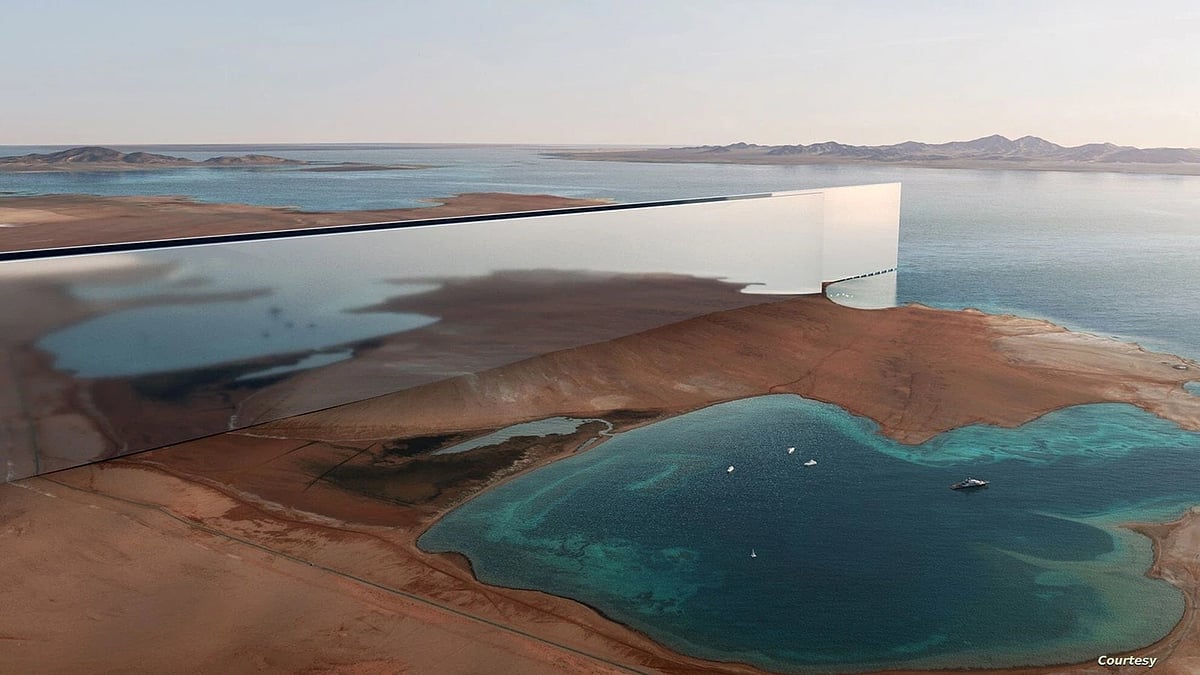Architecture is treading dangerously close to irrelevance. It has been a progressive degeneration fuelled by whim, ego, novelty and, possibly, megalomania. Not so surprising, given the socioeconomic and political preoccupations of most countries around the globe, each racing the other. For the most part of the past century it was taller, taller, still taller, and ridiculously taller. Until we got bored and barely cared how tall things got.
Humans, given our diminutive size, have always been obsessed with building bigger. The earliest documented towers are at Tell Qaramell (10,900 BCE to 8,850 BCE). Closer home and within walking distance from my house and studio, the Qutub Minar stands at 73 metres — built in 1192. And there have been a number of towers between 1192 and now.
The 20th century saw the rise of the Rockefeller Centre and the Twin Towers, but the race really hotted up after the 1990s. Suddenly, towers started sprouting almost everywhere, like there was a global race for tall buildings, the United States, China, Malaysia, England and the UAE each outdoing the other every few years to post a new high! Even Delhi made an honest attempt with the 24-floor Municipal Headquarters Building on Asaf Ali Road, but the sheer delay in executing a competition-winning entry took away any possible claims to glory the project might have had!
After a while, though, height stopped mattering! So the star architects of the time turned to other novelties — of shape: cheese graters, cucumbers, walkie-talkies, shards, bottle openers, with the seriousness of a black-tie dinner and much architectural posturing. I am sure if you can name an object, there must be an architectural representation of it somewhere on the globe — cups, saucers, fish, ducks, et al. This is not a chronologically accurate account of events, but I trust you see the thread of my argument.
When maximising commercial returns on highly priced properties as an architect, you do not have much room to play with. Also, the need for economy and optimisation of huge investments would curtail any creative “wastefulness”. So you are left with what architects like to call “form” — or object-making, suitably glorified.
The norm has become towers of featureless glass. And, frankly, you can shape them any way you like. The shapes have little or no impact on the pigeonhole that thousands of office workers are crammed into for the eight hours of their workday! Anything works — a birthday cake, a candle, a giant gherkin, even possibly a bottle of the Shah’s favourite perfume. Follow it up with enough noise and hype to get the newspapers talking, push up rental prices, and create a buzz that lasts till the next curiosity comes along and this one is forgotten in the long history of questionable shapes and ego-tripping that has become the world of tower architecture globally!
In the age of Instagram one now scrolls past even the most breathtaking pictures of needle-sharp spires of buildings floating in a sea of clouds that appear to be thousands of metres above the earth's surface! Without even a wow!
My last memory of such architectural nonsense was Rem Koolhaas and his theory of Bigness! Yes, big featureless masses of buildings that proclaimed — you guessed right — Bigness! What an earth-shattering idea! The race for tallest — it is, of course, still on, but only discussed sheepishly in corners — was over for the most part.
In the last decade climate change and sustainability have increasingly become talking points and global concerns for architecture and human habitat. The need to respond to, respect and preserve the environment became paramount. All talk turned to ways and ideas to respond to its natural systems and intervene in ways that would help restore the life-giving systems of this unique planet. The U.N. floated the Sustainable Development Goals.
And then in 2020 the pandemic struck! We saw the world stop! Unnecessary air travel came to a standstill. Economies had to overhaul themselves. Those were a tough two years globally, years that made many of us question the status quo and the mindless market-driven lives we had accepted without demur.
Bio-bubbles, self-sustaining, using less, nutrition and lifestyle, planetary health were now in everyone's conversation. The pandemic was hard, but it did put the planet at the centre of a lot of consciousness. Sustainability had become the new benchmark for everything — food, fashion, sourcing and, of course, architecture.
And in 2022, just as we ease our guard on the pandemic and hope to build a more sustainable future, we witness the Return of the Mack!
A single building — one hundred and seventy thousand metres long, or as we architects would write it while dimensioning the drawing in the accepted metric system, 170,000,000 millimetres — with mirror glass facades 500 metres high reflecting the scorching sun on to a dry and inhospitable desert landscape! Claiming to be a “revolution in civilisation”.
The line is designed — if you can call tracing a straight line across a desert landscape for 32km and cleaving it in two design — by the celebrated American firm Morphosis, casting forever their name in the history of bad ideas in a sellout of creativity that has been the hallmark of starchitects!
What do we call this? Longness? Line-ness? Coke? Take that in for a minute. Another addition to the recent history of tall, short, fat, thin, round, long, but essentially unnecessary buildings.
I will not waste precious words to argue the premise of the building and its claims to sustainability. There is NOTHING sustainable about an idea like that. Nothing! It is not even a bad joke. It is tasteless, meaningless, unnecessary and above all a bad precedent in ecologically critical times. The planet is in crisis. And a large part of that crisis is caused by “development”. A 172km long building across a desert landscape is just juvenile.
If this were architecture school in the 1990s and I had walked in to Thesis Studio with a project like that, my HoD, whom we called Sheru, would have looked at me with a wicked grin and asked if that was the only line I had done the previous night!
Henri Fanthome, an architect who trained at the SPA, lives and works out of Mehrauli, Delhi and writes about design and urban spaces









